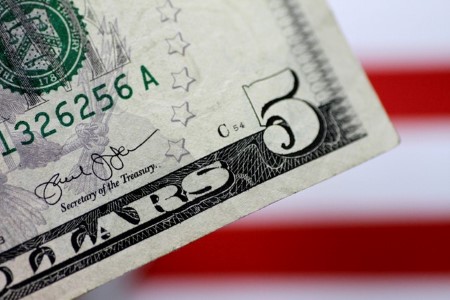




Policy Rate Updates: Double cut finale
 DOWNLOAD
DOWNLOAD

Monthly Economic Update: One for the road
 DOWNLOAD
DOWNLOAD

Inflation Update: Still low, still slow
 DOWNLOAD
DOWNLOAD


US Treasury yields climb on strong February inflation data

WASHINGTON, March 14 – US Treasury yields climbed on Thursday following hotter-than-expected February inflation data, raising uncertainty about whether the Federal Reserve would cut interest rates later than June, as widely expected.
The benchmark 10-year note yield was last up 10.2 basis points (bps) at 4.294%, on track for its best daily gain since mid-February.
US two-year yields were up 6.5 bps on the day at 4.687%. Both the two-year and 10-year yields rose for the fourth consecutive day and touched two-week lows.
Data showed the producer price index rose 0.6% in February, exceeding forecasts of 0.3% and the previous month’s increase. This follows Tuesday’s surprisingly solid increase in the consumer price index for February.
Still, the data only slightly dented speculation in the futures markets that the Fed would ease in June for the first time since it began hiking the Fed funds rate from near-zero in March 2022.
The Fed holds a two-day policy meeting next week, in which it is expected to hold rates in the 5.25%-to-5.5% range until June. At least two more rate cuts are likely by year-end. The Fed is looking for data that gives them more confidence inflation is on a path to their 2% goal.
Traders in Fed funds futures reduced bets that the Fed will cut rates by June to 60.6%, from 66.7% on Wednesday, according to the CME Group’s FedWatch tool.
“This data really pushes back on the market pricing,” said Subadra Rajappa, head of US rates strategy at Societe Generale in New York.
“If you look at the market pricing of cuts, June really feels like a coin toss as opposed to a shoo-in now like it was over the last couple of weeks.”
In addition to February’s PPI data, initial jobless claims for the week ending March 9 also came in stronger than expected. There were 209,000 claims on the week, lower than the 218,000 expected.
Retail sales disappointed in February, meanwhile, ticking up 0.6% month over month versus an expected 0.8% increase.
“The one observation that we’ll add is the pace of retail sales during Q1 hints of the specter of stagflation – although it’s only a couple prints and insufficient to draw any broad-based conclusion,” Ian Lyngen, managing director and head of US rates strategy for BMO Capital Markets, said in a note.
“The knee-jerk response to the data was bond-bearish but the price action has faded and the theme of unchanged and quiet trading has re-emerged.”
In other maturities, the 30-year bond yield was last up 9.4 bps to 4.412%. Like the two- and 10-year, it also briefly touched its highest in two weeks.
The US yield curve, meanwhile, which measures the yield spread between two-year and 10-year notes steepened or narrowed its inversion on Thursday to minus 39.5 bps from minus 44.7 bps on Wednesday.
An inverted yield curve typically predicts an upcoming recession.
(Reporting by Matt Tracy; Editing by Richard Chang and Jonathan Oatis)
This article originally appeared on reuters.com





 By Reuters
By Reuters